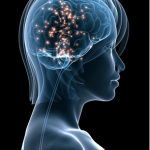Meta-cognition is a very interesting word that has gained prominence in education and is something I felt like highlighting. As I have developed lesson plans for the new school, it has caused me to really analyze the way I do things. And, it should cause you to wonder as well.
A loose definition of the word is thinking about how you think. At first it may seem that I am talking in circles because a good deal of what we do as we read or think through a problem is second nature. That is, you read something and your thoughts just flow.
But, if you really stopped for a moment and realized exactly how you go about the process of making meaning it becomes a very interesting concept. Interesting, because we all use a number of roads to get to the same destination:
Making Connections: Some of us read something and instantly relate this to a previous experience, something we have read before, or something we know exists in the world. We then draw conclusions based on this quick mental scan process.
 Visualizing: Some of us create mental pictures in our heads to walk ourselves through the landscape of the problem. In this way the situation becomes very personal and much more memorable. It is as if we are creating our own little movie as we read something or analyze a problem.
Visualizing: Some of us create mental pictures in our heads to walk ourselves through the landscape of the problem. In this way the situation becomes very personal and much more memorable. It is as if we are creating our own little movie as we read something or analyze a problem.
Making Inferences: this is the mystery solving aspect of learning. We collect clues, look at pictures, analyze the context in which something is presented and then like good Sherlock Holmes’ make a prediction based on the clues.
Determining Importance: Some of us are excellent at scanning and filtering. We read through a text and instantly find the key points that help us sort out the meaning and draw a conclusion.
All of the above are tools we use to make meaning of the day-to-day information that whirls past us as we go about our day. So, the next time you read something… stop for a moment and ask yourself what you just did. You might find it very interesting!

